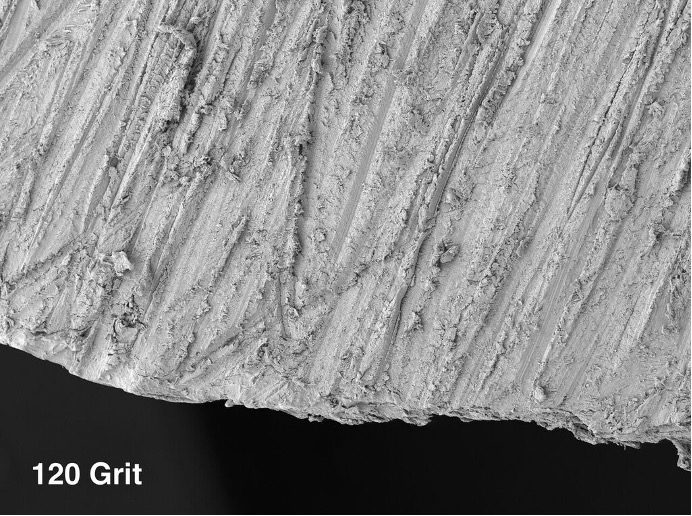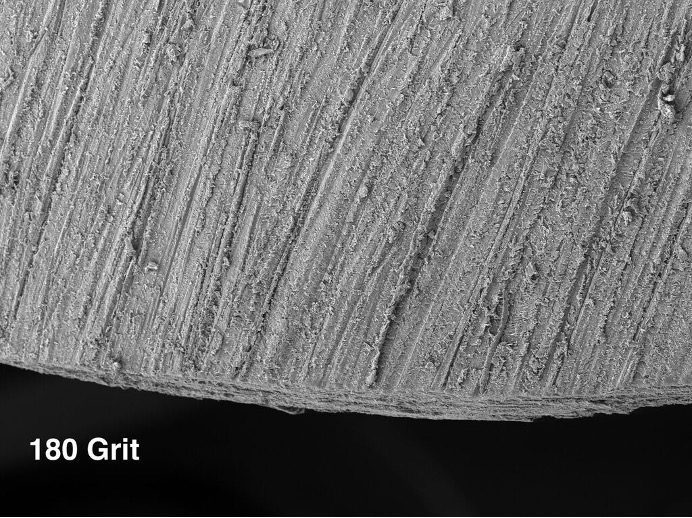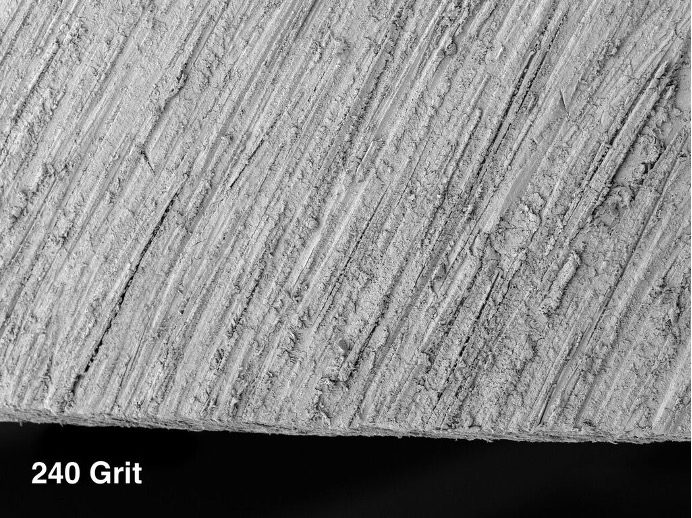Tìm kiếm câu trả lời bạn đang tìm kiếm.
-
Trung tâm làm móng
-
- Dòng Beau's
- Mụn cơm và vết chai
- Bệnh nấm móng
- Viêm da
- Nấm dermatophyte và không dermatophyte
- Bệnh tiểu đường
- Hồng móng
- Thói quen
- Móng tay xước
- Hapalonychia
- Bệnh loạn dưỡng móng trung bình Heller'
- Tăng tiết mồ hôi
- Giới thiệu về tình trạng móng tay
- Koilonychia
- Thoái hóa phiến
- Bạch móng
- Melanonychia
- Cắn móng tay
- Móng tay nhọn
- Rãnh móng tay / chỗ lõm
- Bệnh móng ẩn
- bong móng
- Onychomadesis
- Bệnh nấm móng
- Viêm quanh móng
- Bệnh vẩy nến
- Màng cánh
- Xuất huyết do mảnh dằm
- Bệnh nấm móng nông màu trắng
- Hiển thị tất cả các bài viết ( 14 ) Thu gọn bài viết
-
Hỏi các chuyên gia
-
- Dũa móng tay bằng thủy tinh có tốt hơn không?
- Dụng cụ đẩy biểu bì bằng kim loại có an toàn không?
- Tôi có thể cắt phần móng tay sừng hóa ở gần không?
- Tôi có thể chỉ sử dụng acetone để làm sạch móng trước khi làm dịch vụ không?
- Sơn móng tay có phải là sản phẩm hữu cơ không?
- Sản phẩm chăm sóc móng có thể phục hồi móng không?
- Lớp biểu bì có thể bao phủ toàn bộ móng tay không?
- Bạn có thể giải thích những rủi ro khi dũa phần thành bên của móng không?
- Có phải tất cả các móng tay đều mọc dài 1mm mỗi tuần không?
- Làm móng có làm hỏng móng tay của bạn không?
- Việc dũa hai bên móng tự nhiên có làm móng yếu đi không?
- Sơn móng tay hoặc sơn gel UV có làm móng bị mất nước không?
- Hướng dũa móng có quan trọng không?
- Liệu móng tay có hấp thụ bất kỳ hóa chất nào có trong các sản phẩm chúng ta sử dụng không?
- Hangnails. Lời khuyên của bạn là gì?
- Làm thế nào để cứu móng tay bị cắt?
- Thuốc nhỏ giọt và xịt làm khô sơn móng tay hoạt động như thế nào?
- Thời tiết lạnh ảnh hưởng đến móng tay như thế nào?
- Canxi có tốt cho móng tay không?
- Canxi có tốt cho móng tay tự nhiên không?
- Có phải chất tẩy biểu bì là thứ nhất định phải có không?
- Sơn móng tay của tôi có phù hợp với tôi không?
- Sơn móng tay có an toàn khi sử dụng nhiều lần cho khách hàng không vì nó 'không thể'lưu trữ mầm bệnh'?
- Vết sơn móng tay trên móng tay
- Vitamin trước khi sinh và sự phát triển của móng tay
- Sơn móng tay khô nhanh?
- Bạn có nên giũa móng tự nhiên trước khi phủ lớp sơn phủ hai tuần không?
- Một số sản phẩm làm móng có tuyên bố giúp móng khỏe hơn. Đây có phải là tuyên bố hợp lệ không?
- Những đường đen mỏng dưới móng tay này là gì?
- Làm móng tay khô là gì?
- Làm móng tay kiểu Nhật là gì?
- Làm móng ướt là gì?
- Kiểu làm móng nào là an toàn nhất?
- Kiểu làm móng nào là tốt nhất?
- Sự khác biệt giữa kiểu làm móng tay kiểu Pháp và kiểu làm móng tay kiểu Mỹ là gì?
- Ngâm mình trong nước có hại gì?
- Độ nhám của dũa móng tay là gì?
- Cái nào tốt hơn? Xà phòng và nước hay nước rửa tay khô trước khi làm dịch vụ?
- Làm sao để phủi sạch bụi?
- Tại sao lớp sơn móng tay lại bị dính chặt khi sơn?
- Tại sao tôi nên sử dụng đế linh hoạt?
- Hiển thị tất cả các bài viết ( 26 ) Thu gọn bài viết
-
- Sơn lót có chứa axit hay không chứa axit?
- Liệu nối móng bằng gel có tốt hơn móng acrylic không?
- Hệ thống móng tay của tôi có xốp hay không?
- Tôi có thể dũa móng tự nhiên bên dưới phần móng được cải thiện bằng phương pháp điện tử không?
- Bạn có thể trộn chất lỏng từ hệ thống này với bột từ hệ thống khác không?
- Cải tiến bột nhúng?
- Liệu tương lai của acrylic có hạn chế không?
- Có tồn tại monome phổ quát không?
- Sơn gel dễ cháy như thế nào?
- Cần loại bỏ bao nhiêu sản phẩm trong quá trình cân bằng lại?
- Liệu L&P có nguy hiểm hơn gel không?
- Có loại bột làm móng acrylic đa năng nào có thể dùng với bất kỳ loại chất lỏng monome nào không?
- Dầu dưỡng móng và nâng cơ
- Cải tiến bằng cách véo?
- Một số nhãn hiệu bị hỏng nhanh hơn những nhãn hiệu khác, đây là vấn đề về sản phẩm hay tính chất hóa học của cơ thể?
- Dầu cây trà có thẩm thấu qua móng tay không?
- Lấp đầy hay thấm bớt?
- Có nên véo móng tay giả hay không?
- Hiểu sự khác biệt giữa dung dịch làm sạch và chất tẩy rửa cho móng tay polygel
- Tôi phải làm gì với lượng monome còn thừa?
- Sự khác biệt giữa sơn móng tay kiểu Pháp và sơn móng tay màu hồng và trắng là gì?
- Sự khác biệt giữa Fiber Base và Normal Base là gì?
- Nên dùng cọ cỡ nào?
- Tại sao móng tay lại mỏng đi sau khi loại bỏ lớp sơn móng tay?
- Hiển thị tất cả các bài viết ( 9 ) Thu gọn bài viết
-
- Bỏng hóa chất?
- Sử dụng nồi hấp
- Tôi có thể bị đau đầu khi làm việc với các sản phẩm làm móng không?
- Tôi có thể vệ sinh và khử trùng dụng cụ tách ngón chân không?
- Tôi có thể sử dụng lò nướng để khử trùng dụng cụ của mình không?
- Tôi có thể dùng keo siêu dính thay cho nhựa thông để nối móng bằng sợi thủy tinh không hay cách đó không hiệu quả?
- Tôi có thể làm việc với khách hàng bị tiểu đường không?
- Bạn có thể giải thích những rủi ro khi dũa phần thành bên của móng không?
- Bạn có thể trộn sản phẩm Hema và Hema-Free không?
- Bạn có thể khử trùng dụng cụ kim loại bằng cồn isopropyl không?
- Dung dịch khử trùng và thiết bị siêu âm
- Tôi có cần bằng cấp để làm móng không?
- Thiết bị khử trùng bằng tia UV có hiệu quả không?
- Dầu biểu bì có thực sự phá vỡ được keo dán móng tay truyền thống không?
- Hướng dũa móng có quan trọng không?
- Cải thiện thói quen cắn móng tay?
- Cọ lông tơ so với cọ tổng hợp để phủi bụi
- Nước rửa tay hay nước rửa tay?
- Tôi không rõ cách xử lý móng tay bị mộng thịt.
- Sử dụng E-File có an toàn không?
- Covid hoặc việc rửa tay có ảnh hưởng đến dịch vụ làm móng không?
- Liệu đắp gel dưới móng đục có gây nguy hiểm cho móng không?
- Rửa tay có khiến sản phẩm làm móng bị bong tróc không?
- Việc vệ sinh có đủ tốt không?
- Chất liệu của găng tay cao su có gây ra tình trạng nhạy cảm ở tay không?
- Răng của khách hàng tôi bị sứt mẻ/mất độ sắc nét và tôi chưa từng gặp tình trạng này trước đây?
- Mặt nạ làm móng
- Đang mang thai và đang cân nhắc đến trường dạy nghề làm móng. Có mối lo ngại nào khác ngoài vấn đề thông gió và vệ sinh không, hay tôi nên hoãn lại bây giờ?
- Có nên đeo khẩu trang trong suốt buổi lễ không?
- Tôi có nên khử trùng tất cả cọ sơn móng tay không?
- Tôi có nên sử dụng 'protein bonder' để ngăn ngừa tình trạng nâng cơ không?
- Bạn có nên đổ hết chai cũ vào chai mới không?
- Một số sản phẩm làm móng có tuyên bố giúp móng khỏe hơn. Đây có phải là tuyên bố hợp lệ không?
- Một số khách hàng của tôi gặp phải tình trạng nhiệt độ tăng đột biến khi sơn lớp nền và lớp phủ.
- Tủ đèn UV đựng dũa móng tay?
- Sử dụng kem chống nắng có thể dẫn đến sự cố dịch vụ không?
- Yêu cầu pháp lý đối với việc điều trị trẻ vị thành niên là gì?
- Điều gì xảy ra khi trộn acetone với dầu?
- Làm móng theo phong cách Brazil là gì?
- Làm móng tay kết hợp là gì?
- Làm móng tay kiểu Nga là gì?
- Sự khác biệt giữa vệ sinh, khử trùng và tiệt trùng là gì?
- Sự khác biệt giữa HEMA và di-HEMA là gì?
- Sơn móng tay hết hạn khi nào?
- Tôi có thể tìm thấy hàm lượng thành phần an toàn cho gel và gel tạo khối ở đâu?
- Hiển thị tất cả các bài viết ( 30 ) Thu gọn bài viết
-
- Acrylates trong sơn móng tay dạng gel?
- Acetone có thể gây phồng rộp không?
- Tôi có thể bị đau đầu khi làm việc với các sản phẩm làm móng không?
- Khách hàng của tôi có thể bị dị ứng với acetone không?
- Tôi có bị dị ứng hoặc kích ứng không?
- Sản phẩm làm móng không chứa gluten?
- Tại sao tôi lại bị dị ứng với gel?
- Tôi phải giải thích thế nào khi bị dị ứng với khách hàng "hiểu biết hơn"?
- Acetone có an toàn để tẩy sơn móng tay không?
- BPMMA có an toàn cho móng giả không?
- Có an toàn khi phủ lớp phủ lên vết nứt móng không?
- Liệu gel gốc cao su có dễ bị nấm và nhiễm trùng hơn gel thông thường không?
- Có loại sơn móng tay gel nào an toàn không?
- Nhấn vào móng tay, phản ứng dị ứng đã lành, tôi có thể thử lại gel không?
- Dầu cây trà có thẩm thấu qua móng tay không?
- Sử dụng kem chống nắng có thể dẫn đến sự cố dịch vụ không?
- Nguyên nhân nào gây ra phản ứng trên da sau khi loại bỏ sản phẩm làm móng?
- Bạn khuyên dùng nhãn hiệu gel UV nào?
- Tại sao chúng ta thấy nhiều phản ứng hơn về dịch vụ sơn gel so với dịch vụ làm đẹp bằng gel?
- Hiển thị tất cả các bài viết ( 4 ) Thu gọn bài viết
-
- Liệu nối móng bằng gel có tốt hơn móng acrylic không?
- Gel cứng có phù hợp với mọi người không?
- Hệ thống móng tay của tôi có xốp hay không?
- Liệu đắp móng giả có phải là giải pháp thay thế an toàn nếu bạn bị dị ứng với gel không?
- Gel UV có tốt hơn cho móng tay không?
- Acrylic có thể được sử dụng dưới lớp mi giả che phủ toàn bộ không?
- Tôi có thể dũa móng tự nhiên bên dưới phần móng được cải thiện bằng phương pháp điện tử không?
- Bạn có thể trộn sản phẩm Hema và Hema-Free không?
- Làm móng gel có làm hỏng móng của bạn không?
- Liệu sắc tố trong sơn gel có giải thích được lý do tại sao thợ làm móng lại sơn một lớp mỏng hơn so với sơn gel thông thường không?
- Quá trình đông lạnh có làm gián đoạn quá trình đông cứng không?
- Sử dụng gel UV có đầu trong suốt che phủ toàn bộ có thể giữ được hiệu quả không?
- Gel trên ngón chân?
- Làm thế nào tôi có thể tìm được loại sơn gel UV không độc hại?
- Sơn gel dễ cháy như thế nào?
- Cần loại bỏ bao nhiêu sản phẩm trong quá trình cân bằng lại?
- Nếu tôi sử dụng đèn LED làm móng trên sản phẩm được thiết kế cho đèn UV làm móng truyền thống, liệu gel UV có bị đông cứng quá mức không?
- Lớp ức chế và gel không làm sạch
- Làm móng gel UV có an toàn cho người có vấn đề về sức khỏe da trước đó không?
- Liệu đắp gel dưới móng đục có gây nguy hiểm cho móng không?
- Việc làm nóng gel UV có phải là vấn đề không?
- Có đúng là gel LED đóng rắn từ dưới lên không?
- Liệu L&P có nguy hiểm hơn gel không?
- Liệu gel gốc cao su có dễ bị nấm và nhiễm trùng hơn gel thông thường không?
- Lớp sơn lót cao su có giống với lớp sơn phủ cao su không?
- Có loại sơn móng tay gel nào an toàn không?
- Hệ thống trộn móng
- Dầu dưỡng móng và nâng cơ
- Tự thực hành và dễ dàng loại bỏ?
- Nhấn vào móng tay, phản ứng dị ứng đã lành, tôi có thể thử lại gel không?
- Loại bỏ gel chưa đông cứng
- Tôi có nên mua đèn làm móng dựa trên công suất không?
- Tôi nên làm móng gel hay móng nhúng?
- Khách hàng của tôi có nên rửa tay trước khi thoa dầu không?
- Gel UV có nên "cháy dữ dội" không?
- Chúng ta có nên tháo đế cao su ra khỏi tấm móng không?
- Một số nhãn hiệu bị hỏng nhanh hơn những nhãn hiệu khác, đây là vấn đề về sản phẩm hay tính chất hóa học của cơ thể?
- Đôi khi các cạnh tự do trở nên trong hơn sau khi ngâm?
- Lấp đầy hay thấm bớt?
- Có nên véo móng tay giả hay không?
- Hiểu sự khác biệt giữa dung dịch làm sạch và chất tẩy rửa cho móng tay polygel
- Có sử dụng dầu dưỡng biểu bì khi ngâm không?
- UV GEL trộn với Acrylic - thắc mắc về cách bảo quản
- Dung dịch pha loãng sơn gel UV
- Nguyên nhân nào gây ra phản ứng trên da sau khi loại bỏ sản phẩm làm móng?
- Thuật ngữ "overcured" thực sự có nghĩa là gì?
- Phương pháp đúng để áp dụng sản phẩm loại 'BIAB' là gì?
- Sự khác biệt giữa sơn móng tay kiểu Pháp và sơn móng tay màu hồng và trắng là gì?
- Sự khác biệt giữa Fiber Base và Normal Base là gì?
- Sự khác biệt giữa HEMA và di-HEMA là gì?
- Sản phẩm nào là nhựa bọc và không có gel nhẹ?
- Bạn khuyên dùng nhãn hiệu gel UV nào?
- Tôi có thể tìm thấy hàm lượng thành phần an toàn cho gel và gel tạo khối ở đâu?
- Tại sao chúng ta thấy nhiều phản ứng hơn về dịch vụ sơn gel so với dịch vụ làm đẹp bằng gel?
- Tại sao móng tay lại mỏng đi sau khi loại bỏ lớp sơn móng tay?
- Tại sao một số màu gel UV lại phai?
- Tại sao bạn lại khuyên nên lau không cần lau để phủ lớp sơn?
- Đèn bàn LED có ảnh hưởng đến gel đông cứng bằng đèn LED không?
- Hiển thị tất cả các bài viết ( 43 ) Thu gọn bài viết
-
- Đèn UV có an toàn không?
- Nếu tôi sử dụng đèn LED làm móng trên sản phẩm được thiết kế cho đèn UV làm móng truyền thống, liệu gel UV có bị đông cứng quá mức không?
- Tôi có nên mua đèn làm móng dựa trên công suất không?
- Còn những khách hàng có tiền sử ung thư da thì sao?
- Thuật ngữ "overcured" thực sự có nghĩa là gì?
- Tôi nên sử dụng đèn UV làm móng nào?
-
- Một người xanh! Tại sao? Tôi phải làm gì?
- Ngâm acetone có thể làm thay đổi cấu trúc móng tay của bạn không?
- Móng tay có cần được thở không?
- Liệu việc làm móng có gây ra chứng loạn dưỡng móng giữa (solenonychia) không?
- Viêm khớp hoạt động ở đốt ngón tay có ảnh hưởng đến móng khi nâng vật nặng không?
- Làm sao để tránh được "greenies"?
- Làm thế nào để chữa khỏi tình trạng tăng sừng ở móng tay?
- Tôi phải điều trị "hội chứng móng tay xanh" như thế nào?
- Thời tiết lạnh ảnh hưởng đến móng tay như thế nào?
- Tôi không rõ cách xử lý móng tay bị mộng thịt.
- Tôi khá chắc chắn rằng khách hàng làm móng gel UV của tôi có WSO
- Có an toàn khi phủ lớp phủ lên vết nứt móng không?
- Chất liệu của găng tay cao su có gây ra tình trạng nhạy cảm ở tay không?
- Bệnh bạch móng hay không?
- Bệnh Lichen phẳng. Tôi phải làm gì?
- Dầu cây trà có thẩm thấu qua móng tay không?
- Xét nghiệm bệnh nấm móng (nấm móng) cho kết quả dương tính... Bây giờ phải làm sao?
- Điều trị nấm móng tay
- Những đường đen mỏng dưới móng tay này là gì?
- Onycholsyis là gì?
- Phải làm gì với móng tay không khỏe mạnh?
- Mảng trắng trên móng tay sau khi gỡ bỏ miếng dán
- Tại sao móng tay của tôi lại có đường gờ?
- Tại sao lụa hoặc sợi thủy tinh lại tốt cho móng mỏng/bị hư tổn và yếu hơn?
- Tại sao chúng ta KHÔNG nên đề cập đến "người xanh"?
- Hiển thị tất cả các bài viết ( 10 ) Thu gọn bài viết
-
- Có nên sơn móng tay cho trẻ em không?
- Làm thế nào để cứu móng tay bị cắt?
- Tôi phải làm gì với khách hàng mắc bệnh tiểu đường loại 2?
- Tôi là người tự kinh doanh và có tiệm làm đẹp tại nhà. Tôi có cần phải đánh giá rủi ro không?
- Làm móng gel UV có an toàn cho người có vấn đề về sức khỏe da trước đó không?
- Đang mang thai và đang cân nhắc đến trường dạy nghề làm móng. Có mối lo ngại nào khác ngoài vấn đề thông gió và vệ sinh không, hay tôi nên hoãn lại bây giờ?
- Bác sĩ nói "cứ làm đi". Tôi có nên làm không?
- Yêu cầu pháp lý đối với việc điều trị trẻ vị thành niên là gì?
-
- Ngâm acetone có thể làm thay đổi cấu trúc móng tay của bạn không?
- Tôi có thể cắt phần móng tay sừng hóa ở gần không?
- Khách hàng không muốn ai đánh bóng đường viền móng tay của mình?
- Có phải tất cả các móng tay đều mọc dài 1mm mỗi tuần không?
- Sự phát triển của Hyponychium
- Các con dấu của đơn vị đóng đinh là gì?
- Ma trận móng có chức năng gì?
- Sự khác biệt giữa nền móng và phiến móng là gì?
- Ma trận móng tay còn được gọi là gì?
- Dầu ở móng tay đến từ đâu nếu nền móng không có tuyến?
- Lớp biểu bì ở đâu?
- Tại sao lớp biểu bì của khách hàng tôi dày hơn vào mùa đông?
-
- Tôi có thể dùng keo siêu dính thay cho nhựa thông để nối móng bằng sợi thủy tinh không hay cách đó không hiệu quả?
- Bạn có biết ngâm móng tay trong dầu bơ ấm có thể khiến móng tay bạn bị ố vàng không?
- Gel chỉ chứa Benzyl Methacrylate và Ethylene Glycol Dimethacrylate có được coi là không gây dị ứng không?
- Tôi bị nhầm lẫn giữa thuật ngữ sơn móng tay lai hoặc sơn gel lai.
- BPMMA có an toàn cho móng giả không?
- Khách hàng không muốn ai đánh bóng đường viền móng tay của mình?
- Móng tay có cần được thở không?
- Liệu móng tay có hấp thụ bất kỳ hóa chất nào có trong các sản phẩm chúng ta sử dụng không?
- Cải thiện thói quen cắn móng tay?
- Tại sao tôi lại bị dị ứng với gel?
- Sơn gel dễ cháy như thế nào?
- Gel UV có nên "cháy dữ dội" không?
- Dầu cây trà có thẩm thấu qua móng tay không?
-
-
Ủng hộ
Độ nhám của dũa móng tay là gì?
36 Lượt xem

Câu hỏi:
Làm thế nào để cát của một dũa móng tay ảnh hưởng đến móng tay tự nhiên? Có loại nhám nào không nên dùng trên móng tay tự nhiên không và tại sao? Tôi được khuyên không nên dùng loại nhám nào thô hơn 180 trên móng tay tự nhiên. Nhưng tôi không biết điều này có được khoa học chứng minh không.
Trả lời:
“Grit” mô tả kích thước trung bình của mài mòn hạt. Số grit càng thấp, các hạt mài mòn trên giũa càng lớn. Một hạt grit 60 lớn hơn một chút so với hạt grit 180 và lớn hơn năm lần so với hạt mài mòn 240. Điều đó có vẻ không khác biệt nhiều. Nhưng nếu bạn cao 5 feet, một người cao hơn năm lần sẽ cao 25 feet. Giống như so sánh một chiếc Volkswagen với một ngôi nhà hai tầng. Một quy tắc tốt cần nhớ là grit càng thấp, hạt mài mòn càng lớn và vết xước sẽ để lại trên tấm móng tay.
Theo tôi, móng tay tự nhiên có thể được chuẩn bị đúng cách bằng cách sử dụng giấy nhám 240. Tất nhiên, nếu tấm móng được làm sạch và chuẩn bị đúng cách. Điều này đòi hỏi phải loại bỏ dầu, mảnh vụn và chết lớp biểu bì mô từ bề mặt móng tay vì chúng có thể ngăn chặn sự bám dính của tất cả lớp phủ móng tay.
Các vấn đề phát sinh khi các phiến móng không được vệ sinh đúng cách và chuẩn bị cẩn thận. Đây là một lý do tại sao tôi khuyên khách hàng nên rửa tay bằng nước sạch và đã khử trùng móng tay chải TRƯỚC KHI dịch vụ bắt đầu loại bỏ dầu trên bề mặt cũng như các sinh vật vi khuẩn và nấm. Thay vì dành thời gian để chuẩn bị móng đúng cách, một số người chọn làm chuẩn bị móng tay làm việc với giũa có độ nhám 180. Điều này sẽ loại bỏ dầu trên bề mặt cùng với một số lớp trên cùng của phiến móng. Nó có thể dẫn đến tình trạng phiến móng mỏng đi quá mức. Điều này đặc biệt có khả năng xảy ra nếu không chăm sóc đúng cách và tác dụng quá nhiều lực xuống.
Bất kỳ loại nào có độ nhám thấp hơn 180 đều là rủi ro khi sử dụng trên móng tự nhiên. Rất có thể sẽ dẫn đến hư hỏng quá mức. Theo quan điểm của tôi, lý do duy nhất để sử dụng loại có độ nhám thấp hơn 180 là để giảm độ dày của lớp phủ móng hiện có để móng mọc nhanh hơn dung môi loại bỏ. Giảm lớp phủ độ dày làm giảm thời gian ngâm. Cần thực hiện cẩn thận để tránh làm hỏng phần móng và nền móng bên dưới.






